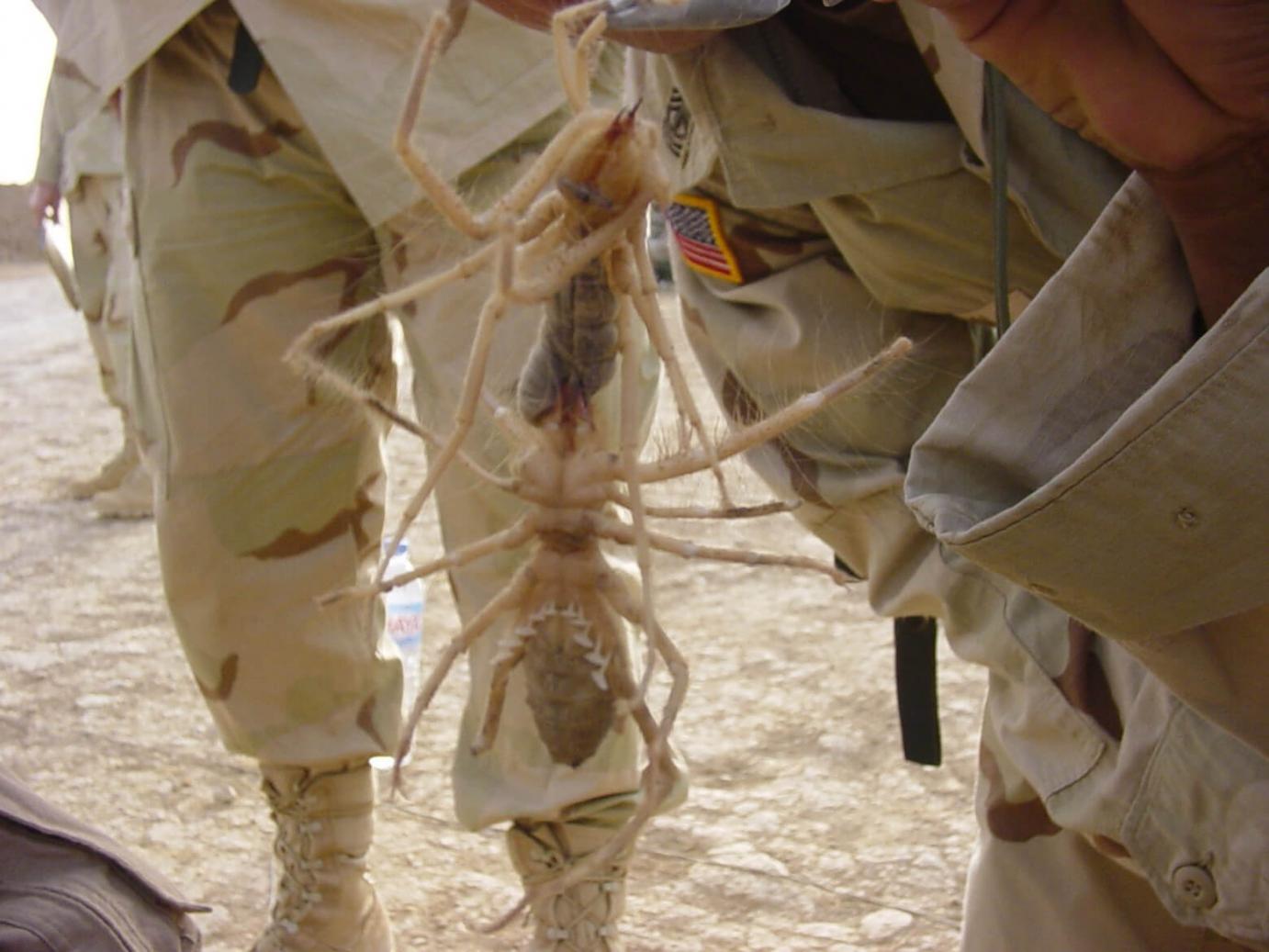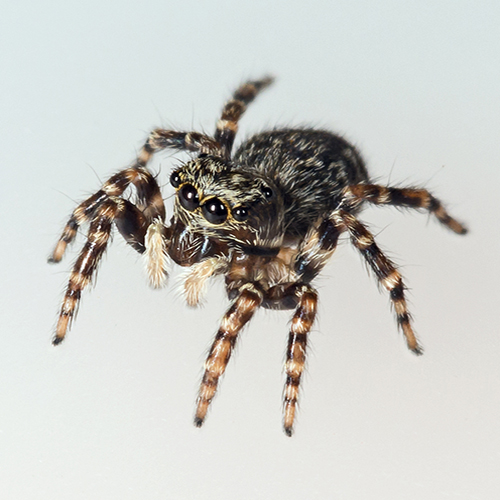
The Infamous Photo. Mass emailed in April 2004 (faked by false perspective; solpugids appear 8-10 times life size).
Then, in follow-up messages, the wild claims started to pile up!
- They call them camel spiders because they eat the stomachs of camels.
- They attach themselves to the under belly of camels and lay eggs under the skin.
- They can traverse desert sand at speeds up to 25 miles per hour, making screaming noises as they run.
- They can jump 4 to 6 feet straight up in the air.
- They will chase you down like a hungry lion.
- If they bite you, the flesh and muscle fall off, leaving a hole.
- They are venomous, and their venom contains a powerful anesthetic that numbs their victims (thus allowing them to gnaw away at living, immobilized animals without being noticed). This builds on a previous myth that spread during the Gulf War.
Solpugids are fast, but not that fast. The maximum speed cited in scientific sources is ten miles per hour, and the only accurately measured speeds I could find were less than 1 mile per hour. Any jumping ability they might have is nothing special. They lay their eggs in the soil, not in camels! They are predatory and do not feed off large animals like camels or humans. When they run toward someone standing in the hot desert sun (or toward their camel or into their tent) they are seeking out shade to hide in. Some species can produce a barely audible stridulation (sounding like a buzz or hiss).
The species in Iraq were studied in Iraq by British scientists during the 39 years (1919-58) the country was under British control. Their anatomy and physiology are well known. They positively have no venom, and no way to inject it even if they did have it! (If they bite and manage to break the skin, the wound is likely to be infected, and such cases may have started some of the stories. Any ill effects could be prevented with disinfectant.) See this article for National Geographic's take on camel spider myths.
I have received (by email) a lot of abuse for doubting these stories – mainly from civilians who probably think it's unpatriotic to doubt the word of a soldier. I have the utmost respect for soldiers but I also know a few, and know that one of their favorite pastimes is sitting around spinning yarns. And why not? They deserve all the diversions they can get. But that doesn't oblige me to believe every tall tale I hear from someone who never, under any circumstances, can give the name of the person it happened to! If the source is an unnamed person ("my nephew," "someone who just returned from Iraq," "shepherds we spoke to," "a Marine," "an airman,"), that's not evidence!
One person offered to have his brother in Iraq send me a 30-cm specimen, but backed down when the brother claimed he couldn't get an export permit. No one has ever explained how they measured speed or jumping height, and of course no one has ever produced a specimen found eating human or camel flesh. But urban legends never die – there's always someone who swears it happened to an unnamed "friend."

Spider Myth Resources
Explore even more! Additional spider resources and more myths (poor spiders can't catch a break!).
